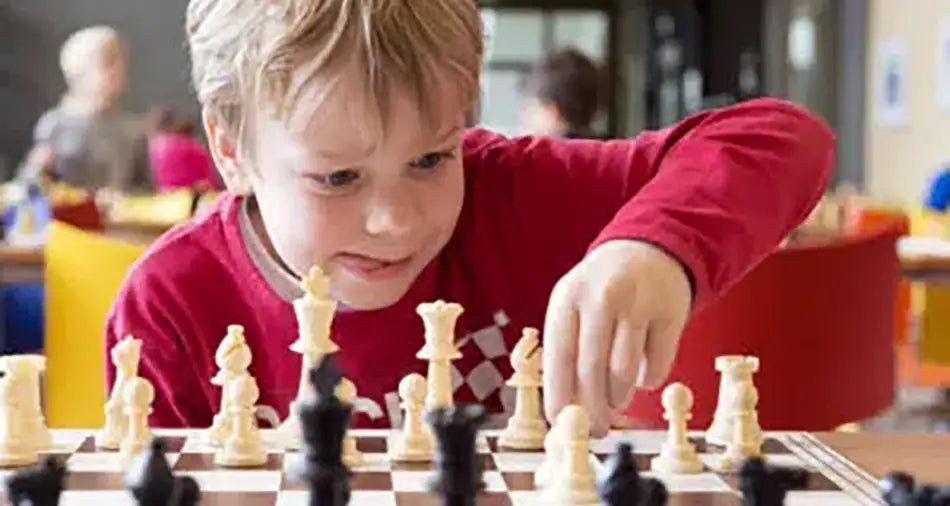“A game is not a game unless the players make meaningful decisions.”
That doesn’t mean that those decisions need to be complex or multifaceted or have far-reaching consequences. The simple decision to roll those dice once more, to drop a token onto a space, or to play this card or that card…that’s plenty.
Aside from the fundamental decision to participate at all, there are a host of gambling games with no decision-making: Glückshaus (pure chance dice game), Bingo (where the challenge is perception alone), the card game War (luck of the draw), and the popular L-C-R (Sorry… I just don’t get the charm of that one at all). There are hundreds of race games that are naught but roll-and-move (which were all the rage 100 years ago). Picking lotto numbers…now there’s a Gamer game! (J’employe le sarcasme.)
(where the challenge is perception alone), the card game War (luck of the draw), and the popular L-C-R (Sorry… I just don’t get the charm of that one at all). There are hundreds of race games that are naught but roll-and-move (which were all the rage 100 years ago). Picking lotto numbers…now there’s a Gamer game! (J’employe le sarcasme.)
Assuming that you are seeking meaningful decisions in your table-top hobby, there is a wide range of decision types to consider, from the simple to the sublime.
Let’s begin with a simple roll-and-move race game. One pawn per player, one randomizer, one linear track of any number of equally valued spaces—as close to a one-dimensional game as you can get. Each player (in turn) generates a random number, moves their pawn accordingly, and then the next player does the same. Barring the interplay of any supernatural forces, “luck” will determine the winner, and you have wasted however much time it takes to “play” this “game.”
The three types of decisions
“Wait just a minute here,” you say. “I cut my teeth on those shallow ‘Uncle Wiggley’ race games!” Yes, yes - and so have we all. (Perhaps nowadays it’s disguised as “Unicorns in Happyland” or something.) I will grant that these decision-less games have value. They teach turn-taking, and patience, and sportsmanship, and (if properly taught) taking responsibility for one’s stuff. But this example is merely an “activity” – not a game.
There is a psychology about types of decisions, but I’m not talking about anything so high-falootin’ as all that. I’m probably missing some important scientific stuff, but for the sake of game-playing, let’s go with this list.
1. Strategic decisions
2. Tactical decisions
3. Pre-probability and post-probability decisions
There are sometimes multiple factors that go into these decisions – a host of conditions, probabilities, personalities, known- and unknown-information. I’ll boil it down to a few simple illustrations, and you can complicate it all you like when we’re done.
 1. Strategic Decisions
1. Strategic Decisions
Strategic decisions only make sense when the game allows for a choice in how one achieves victory. Some games (like the race game described earlier, for example) have only one path to victory: get to the end first. There can be no “Gamer Challenges” in that one. In my opinion, a good game must have more than one path to victory, with options and ways to apply one’s own playing style.
Consider the ancient game of Nine Men’s Morris. A player wins by forming seven 3-point patterns on the geometric game board before his opponent can. Aside from the advantage of the opening move, players are on equal footing, all information is known. Some players focus on the opening, some on the clever herding of the opposing stones into isolation or entrapment, some on the formation of later patterns. For the really experienced player, after the first stone is placed, there are only a few (maybe one) winning strategy to be employed. Like tic-tac-toe, the game can be “solved.”
There’s a tipping point when real strategies come into play. The number of pieces, the features of the game board, the interplay of cards, asymmetrical powers, etc. More decisions and more variables mean more strategic choices.
Theme also introduces meaning to the process - the end game counts for something. The best games (IMHO) have a “story arc” to them - the beginning, the middle, and the end - where strategic variances come into play. (A tip of the hat to Geoff Engelstein for teaching me that one.)Regardless of the individual moves being made, a game that accommodates strategy will have the most depth, replayability, and passion. The players’ own personalities will be manifest in their playing style, and wits will be brought to bear.
2. Tactical Decisions
Tactical decisions are more immediate, dealing with the present situation or with events directly linked to the present move or play. Tactical decisions are components of and guided by strategy and can be “mini-strategies” in themselves – building blocks of the bigger picture.
Tactical decisions, while guided by strategy, are often reactionary and dependent on external circumstances. Tactics are like tools in your toolbox – the implements one uses to pursue one’s strategic objectives. In games where the strategic objectives have been dictated to you, the tactics are the meat of the game, and the quality of the game will depend on the richness of its tactical decisions.
3A. Pre-Probability Decisions
Pre-probability decisions are those made before some random factor is generated, or before some hidden information is revealed. For example, “I’m going to try that, let’s see if this die-roll helps or hinders that effort.” It means that you will commit to an action, then generate a non-specific outcome. (I didn’t say “random” because these outcomes are not necessarily random at all.) This is the essence of all “push-your-luck” games, like Sid Sackson’s classic “Can’t Stop.”
3B. Post-Probability Decisions
Post-probability decisions are made after the non-specific outcome is revealed, as in “I have this die-roll result, I will do something with it.” For example, when playing “Sorry” (originally published by Waddingtons in 1929) you draw your card then decide which pawn to move.Either (or both) of these decisions can add a tremendous amount of tension and flavor to a game, in limited doses. Too much randomness ends up looking like chaos. Conversely, too much predictability can be just plain boring.
Some games, of course, have decisions within decisions, and consequences leading to further consequences. How much of this is enough is a matter of your personal preference... and your “confusion threshold.” At some point, a game can become a chore, and leave the fun far behind. I guess we all need to decide how much deciding is enough.

